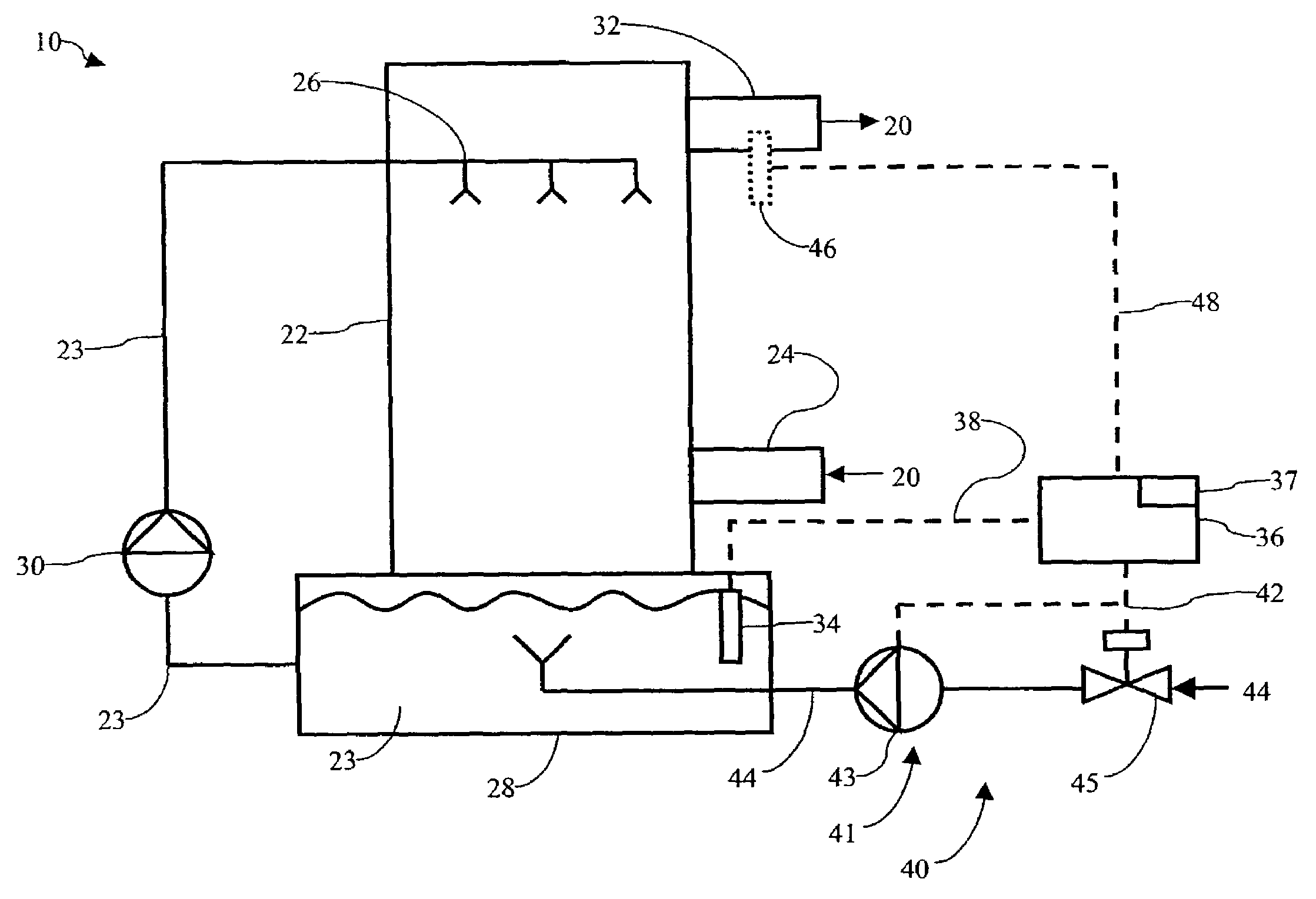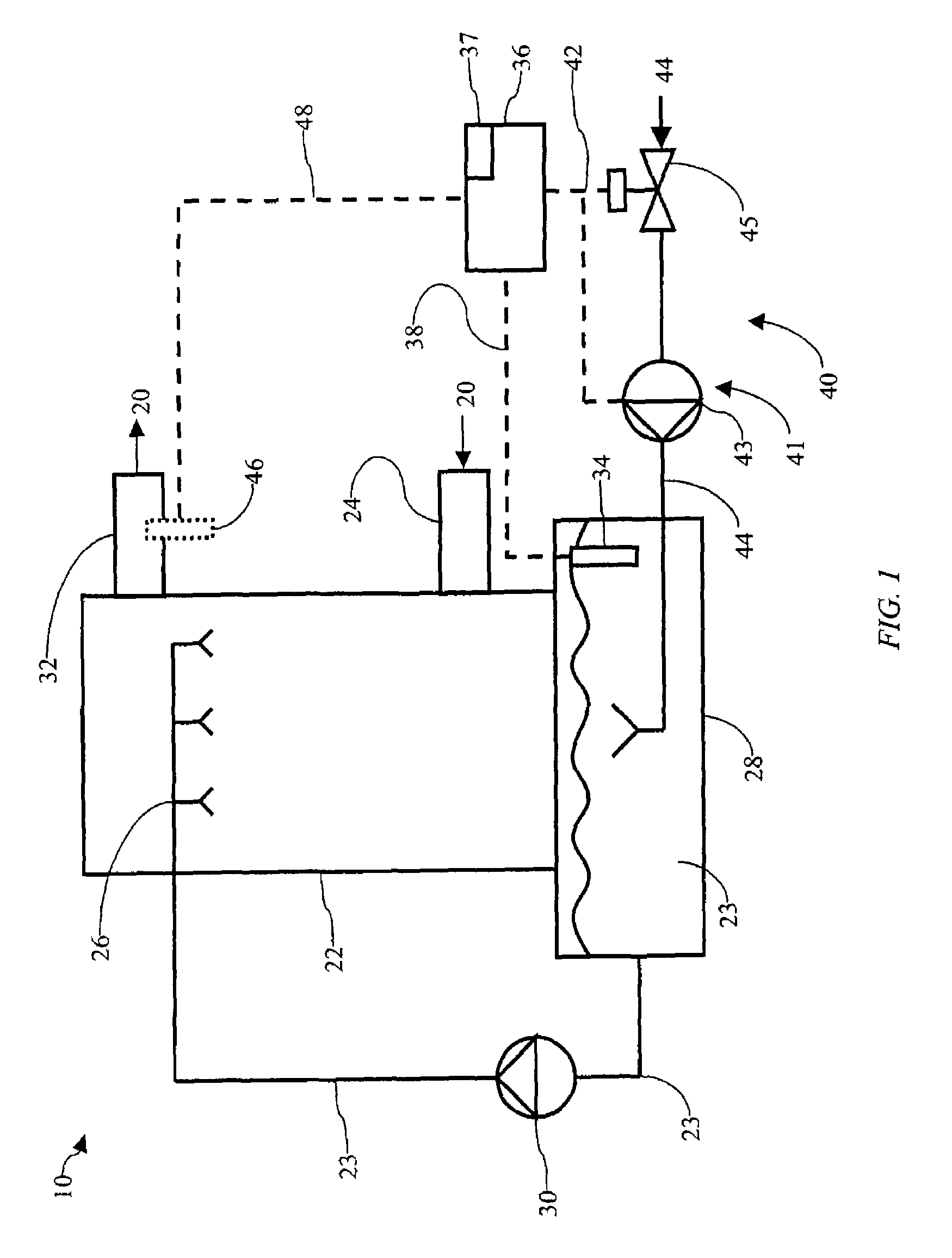Method of mercury removal in a wet flue gas desulfurization system
a technology of desulfurization system and wet flue gas, which is applied in the direction of machines/engines, chemical/physical processes, process and machine control, etc., can solve the problems of difficult control and not easily predicted
- Summary
- Abstract
- Description
- Claims
- Application Information
AI Technical Summary
Benefits of technology
Problems solved by technology
Method used
Image
Examples
Embodiment Construction
[0015]The present inventors have discovered that controlling the reductive capacity of an aqueous alkaline slurry in a wet scrubber makes it possible to accurately control the mercury emission from the scrubber to a desired value. As used herein, the “reductive capacity” is the amount of ionic mercury present in flue gas that can be reduced to elemental mercury by the slurry. One method of controlling the reductive capacity of the slurry is to measure the reduction-oxidation potential (“redox potential”) of the aqueous alkaline slurry and to add or remove substances that affect the redox potential and thus the reductive capacity of the slurry. In wet scrubbers in which limestone is used for absorption of acid gases and where a gypsum slurry is circulated, it has been found to be an attractive solution to control the amount of oxidation air blown into the scrubber in order to control the redox potential and thereby control the mercury emissions. If it is desired to increase the emiss...
PUM
| Property | Measurement | Unit |
|---|---|---|
| reduction-oxidation potential | aaaaa | aaaaa |
| ultraviolet differential optical absorption spectroscopy | aaaaa | aaaaa |
| speed | aaaaa | aaaaa |
Abstract
Description
Claims
Application Information
 Login to View More
Login to View More - R&D
- Intellectual Property
- Life Sciences
- Materials
- Tech Scout
- Unparalleled Data Quality
- Higher Quality Content
- 60% Fewer Hallucinations
Browse by: Latest US Patents, China's latest patents, Technical Efficacy Thesaurus, Application Domain, Technology Topic, Popular Technical Reports.
© 2025 PatSnap. All rights reserved.Legal|Privacy policy|Modern Slavery Act Transparency Statement|Sitemap|About US| Contact US: help@patsnap.com


